Tulsa Tough’s FASTEST LEAD OUT
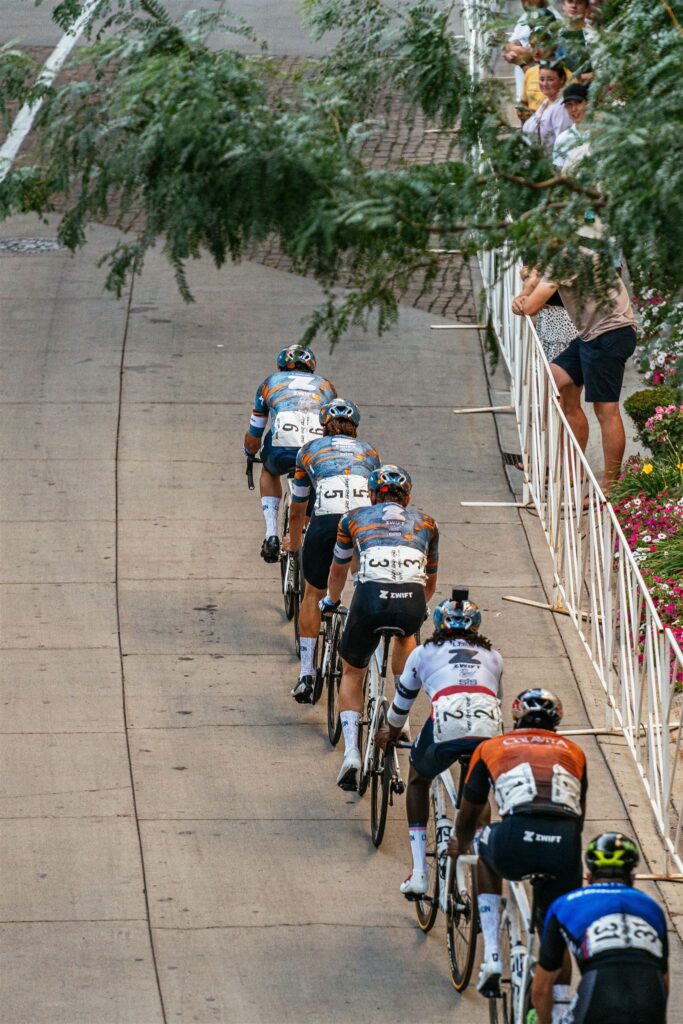
Get Tulsa Tough
Click that button!
Tulsa Tough is the biggest and most prestigious weekend of criterium racing on the planet. It is a destination race for the best-in-class and the best criterium teams send their most valuable riders to vie for the glory at the races. You can not be considered a good criterium racer without toeing the line at Tulsa Tough, full stop.
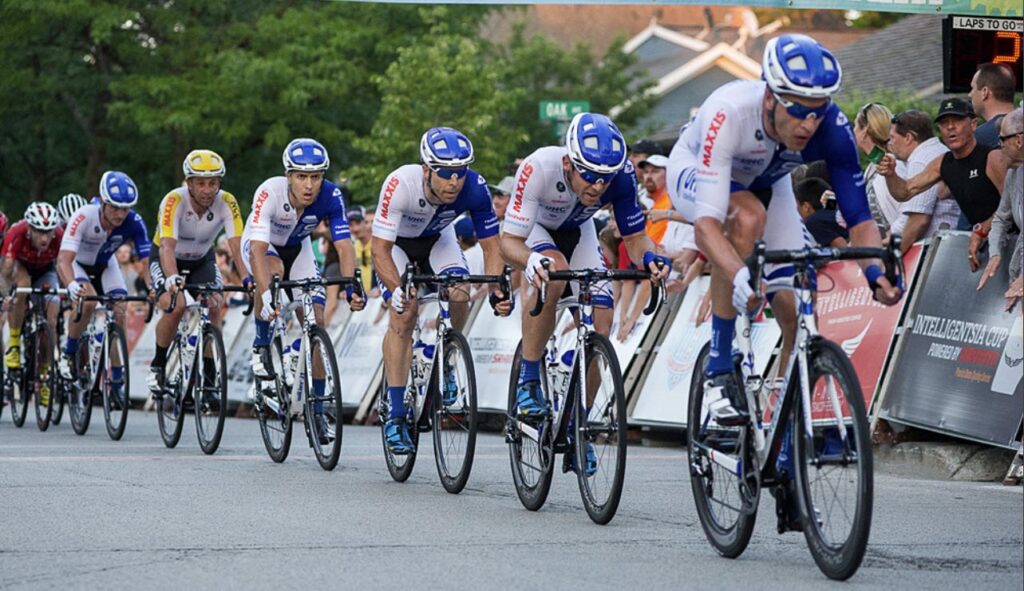
Directly comparing generational talent in any sport is impossible. For example, one can make many arguments for why Michael Jordan is the best ever. But a knowledgeable sportsman can make a reasonable argument for Lebron James even though the two never competed head to head. The fact is that the modern NBA has evolved to be very different from that of the Jordan era making direct comparisons impossible. What we can all agree on is that these two are generational talents.
Baseball is a bit different in that the sport has been largely static over the years. Rule changes by and large don’t impact style of play but have instead focused on making sure the calls on the field are accurate. The modern game would be recognizable to the average fan of the 1950s which is why record keeping is a cult unto itself.
Cycling lies somewhere between these two examples. In some circumstances you can make reasonable comparisons. Having a static set of rules coupled with an unchanging course for the entire existence of the race always helps as it standardizes the venue and rules of play. Racing styles and strategies have evolved some but it still remains that speed wins and the first one across the finish line is the fastest. Beyond that, you’re comparing different generations of riders and equipment.
Sporting generations could be fluidly defined as a period of time it takes for new superstars to supplant the old guard or the amount of time between rule/ equipment driven evolution in sport. As past generations march further from recent memory the performances of its superstars become more rooted in fables and tall tales than in hard facts.
Such is the case of the Saturn Cycling Team, THE super team of the 1990’s into the early 2000’s. A quick read of their roster and every name is familiar. This was undoubtedly the most dominant domestic team of the era. How would these riders stack up to modern teams? I doubt the data exists to even make a reasonable prediction.
However, there is actual data to support a more direct comparison between the United Healthcare Cycling Team (UHC) and Legion of Los Angeles.
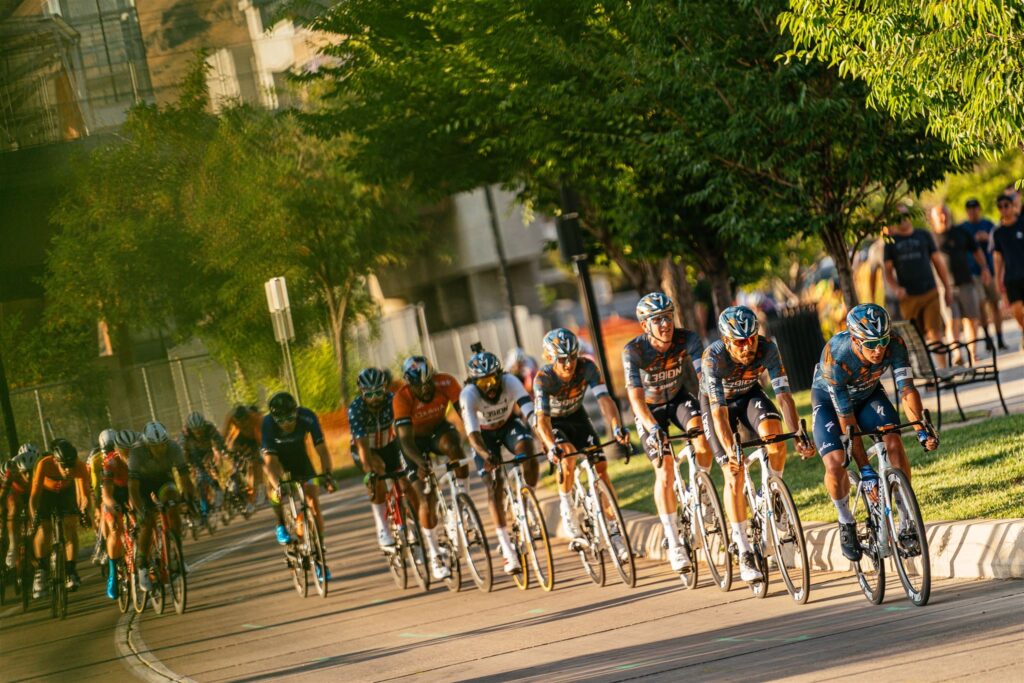
Photo: Kit Karzen
The rules of cycling have not substantially changed since Tulsa Tough began in 2006. I’ve done a podcast that touches on how changing some rules and actually enforcing others could dramatically improve criterium racing as a spectator and as an athlete. The fact remains that the rules of engagement in criterium racing are the same as they were since… always. While I could deliver a solid rant about how criterium racing desperately needs multiple rule revisions, it does allow a much easier apples to apples comparison of sport performance.
There are some differences between that UHC generation compared to the current Legion dynasty. Primarily, the races of the UHC generation were longer. Nearly all elite criteriums in 2006 were 90 minutes, dropping to 80 minutes over time, then 70+5 laps and now 60 or 75 minutes (at the most). Personally, I feel that shorter races make the outcome much more predictable, degrading the entertainment value. Professionally, you would be hard pressed to find a single rider who would not be excited to lengthen their race to 90 minutes or even to (gulp) 80-100km. For reference, the USA Amateur Criterium Championship was once 80km with the US Pro Criterium Championship billed at 100km until sometime around 2018.
The current modern era reduced maximum team size by 2 and now only allows for 6 riders on a team. This was considered the “anti-UHC rule” and it was never effective at slowing the results of the formidable Blue Train.
Quality of field and the depth of field have changed too since the UHC days. The peak UHC criterium squad was a niche team specially built for the discipline. During this time, racing in the USA was undergoing a renaissance of sorts. The National Racing Calendar (NRC) was the primary focus for professional teams while its offshoot, the National Criterium Calendar (NCC) encompassed the rapidly growing big money criterium events. Those competing and conflicting calendars no longer exist and Legion must race every high quality team with the best in the USA at each and every major event.
Equipment has improved. Modern bikes are more aero and faster and the last time I checked going faster is how you win races. Also, tubeless tires are faster than tubular. Yes, I said it and yes it’s true as evidenced by the fact that ZERO wheel companies are still mass producing or selling tubular wheels or tires.
We will compare the Tulsa Tough Brady Village Criterium (Saturday’s course). The course is one of the few criterium courses that has been around long enough to span multiple sporting generations, all the while resisting change. While the landscape is dramatically different now than it was for the first edition in 2006 the roads are the same.
Throughout my coaching career I’ve worked directly and indirectly with a number of riders that were part of both the UHC and the Legion rosters or competed directly with them. I’ve also worked with a number of teams and riders who have competed for the crown at Tulsa Tough over the years. I believe between the client files and by doing some Strava sleuthing I can give an accurate and objective answer about which team is the fastest lead-out.
We’re going to compare the dominant UHC lead outs of 2013 and 2014 vs dominant Legion lead outs in 2019 and 2021. I’m choosing those as they all resulted in convincing wins. The method for this was pretty simple and I’ll do my best to explain:
- We are comparing the final 4 laps of the race across the years.
- We are assuming that the lead outs are “all-in” by that point. There is no plan-B.
- I have direct power file and GPS data from 2 or more riders in the top 10 for each of those years. I am comparing this data to an additional top placing finisher or two on Strava.
- We’re making the assumption that at an average speed of +30mph there is very little, if any field movement. At 30.0 mph you’ll move 44 ft/ sec, so moving 1-2 seconds faster per lap than your competitors while negotiating all the course features during the last throes of the lead out is more or less impossible. In short, there is no “move up.”
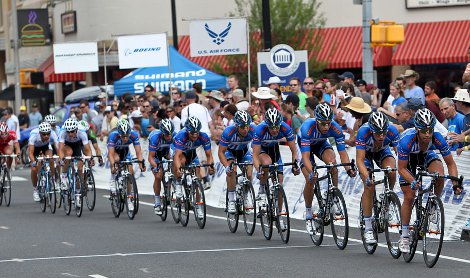
When comparing the speeds of the last 4 laps we get a 3 second range of lap times, except for 2021 where we have direct measurement to accompany the data. Here are the last 4 lap times of those years. I suspect the 3 second range is due to data recording differences and how Strava interprets them. We see that Strava times are 1-3 seconds slower (usually) than manually checked GPS data and hand timing.
To put these speeds in perspective 1:42= 30.0 mph. Clever Martinez has the Strava KOM at 1:28, 34.8 mph. These are average speeds for the entire lap.
2013- UHC
1:44- 1:46
1:45- 1:47
1:38- 1:40
1:28- 1:30
UHC was rewarded with 1-3.
2014- UHC
1:40- 1:42
1:40- 1:42
1:36- 1:40
1:28- 1:30
UHC definitely had to work harder for it in 2014 but were rewarded with 1-3, again.
2019- Legion
1:39- 1:41
1:39- 1:41
1:36- 1:38
1:29- 1:31
Elevate- KHS pushed Legion to the brink on this one but Justin Williams got the W with significant daylight to 2nd place.
2021- Legion
1:42- 1:44
1:36- 1:38
1:32- 1:34
1:28- 1:30
Clever Martinez and Co pushed Legion to keep the speed absolutely bonkers but in the end Legion finished 1-4.
Making a few notes to conclude we can see that all of these vaunted lead out trains are fast. They are really, really fast. I’m also not saying that UHC wasn’t able to go faster. Certainly if you can finish 1-3 there’s more speed in reserve. What I do see is that Legion is 1-2 seconds faster per lap in the last 4 laps than the UHC lead out.
We can definitely agree that circumstances of a race will influence the speed in the final laps.
It appears that sustained lap times of 1:42 or faster per lap will come at the cost of losing riders, even amongst the best teams. Also, that lap times approaching 1:36 or faster are wholly unsustainable. 1:28 may very well be the terminal velocity on the course as that’s about the final lap time across all years.
GPS isn't a great way to time as it's rounded to the second. This allows for rounding on the front and back end of the segment and exposes the small sample size for data points. I only had a couple athlete files from each year and used Strava to corroborate times. At 30mph you're moving 44ft/ sec so a 2 second difference is 88ft, a difference that makes a large effect all because of rounding. Trends show Legion as faster. The only better quality data I can think of is if One2Go timing recorded the laps and kept all the lap times from those years.
Lastly, you can argue that the speed difference is from the advancement of bikes and you may be absolutely correct. However, our discussion is which lead out is the fastest and I believe that the Legion of Los Angeles lead out train is the fastest to ever grace Tulsa Tougth.
Thanks for reading our Criterium Workout of the Week finale!
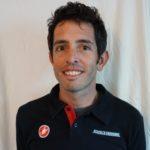
Adam Mills has raced at the elite level since 2002 and graduated with a Masters Degree in Exercise Physiology from the University of Kansas in 2005. His true talent comes with his ability to combine his vast experience with his knowledge of sport. He is indeed a student of science, sport, athletic performance, strategy, and tactics. He continuously educates himself by keeping up to date with current research trends and methods in sport and his clients have reaped the benefits from this work with over 24 national championships in 11 disciplines on two continents. Adam is able to incorporate these attributes on a daily basis to help his clients reach and exceed their goals whether they are a beginner or a seasoned professional. Learn more about Adam and Source Endurance here.
Get Tulsa Tough
Click that button!
